Development DefinitionAccording to the setting, the word "development" can have a variety of connotations, but it often refers to the movement toward a specific target or goal. In terms of economics, development refers to enhancing the social, political, and economic conditions of a nation, frequently through industrialization, higher productivity, and infrastructural development. Personal development, self-improvement, and the expansion of one's knowledge, talents, or capacities are all examples of development. The term "technological development" refers to the designing, developing, or enhancing of systems, services, or products, frequently to increase their effectiveness, efficiency, or usability. Development in human society is frequently used to refer to enhancing social, cultural, and environmental conditions, such as lowering poverty, enhancing health, education, and human rights, as well as preserving the environment. Types of Development:There are several types of development, and these can be categorized based on the area of focus or the development objective. Here are some common types of development: a. Economic DevelopmentEconomic development refers to improving a country's economic conditions, often through industrialization, trade, and investment. In India, economic development has been a significant area of focus for several decades, and there have been notable improvements in areas such as infrastructure, manufacturing, and foreign investment. India has significantly promoted economic growth and development in recent years. The country has implemented various reforms to liberalize its economy, attract foreign investment, and promote industrialization. India has also invested heavily in infrastructure development, including new highways, airports, and power plants, to support economic growth. 
As a result of these efforts, India has become one of the world's fastest-growing major economies, with a projected GDP growth rate of 9.5% in 2021. However, the country still faces significant economic challenges, including high poverty levels, income inequality, and unemployment. In other countries, economic development has also been a key area of focus. For example, China's economic growth and development have been a top priority for several decades. The country has implemented various reforms to promote foreign investment, encourage entrepreneurship, and develop its manufacturing and technology sectors. Similarly, economic development has been a key driver of growth and development in countries such as Singapore and South Korea. These countries have focused on creating business-friendly environments, investing in education and technology, and promoting exports to drive economic growth. In conclusion, economic development is critical to a country's overall development, as it provides the resources and infrastructure needed to support social and human development. While there have been significant successes in economic development in India and other countries, there is still significant work to be done to address remaining economic challenges and promote more inclusive and sustainable growth. b. Sustainable DevelopmentSustainable development aims to balance economic, social, and environmental factors and ensure that development is environmentally sustainable and socially equitable without compromising future generations' needs. In India, sustainable development has become a critical area of focus in recent years, as the country faces significant environmental challenges such as pollution and climate change. India has implemented various initiatives to promote sustainable development, including the National Action Plan on Climate Change, which includes measures to reduce greenhouse gas emissions, promote energy efficiency, and increase renewable energy sources. The country has also implemented various programs to promote sustainable agriculture and improve water management, such as the Pradhan Mantri Krishi Sinchai Yojana, which aims to increase irrigation efficiency and water use. 
In addition, India has focused on promoting sustainable cities and transportation, such as the Smart Cities Mission, which aims to develop 100 smart cities across the country by 2022. This initiative aims to improve urban infrastructure, promote sustainable transportation, and enhance the quality of life for city residents. In other countries, sustainable development has also been a key area of focus. For example, sustainable development has been a priority in Norway for several decades, focusing on reducing greenhouse gas emissions, promoting renewable energy sources, and protecting its natural resources. Similarly, Costa Rica has focused on promoting environmental sustainability and social equity through initiatives such as the Payment for Environmental Services program, which pays farmers to conserve and restore forests. In conclusion, sustainable development is critical to ensuring that development is inclusive, equitable, and environmentally sustainable and that future generations' needs are not compromised. While there have been notable successes in sustainable development in India and other countries, significant work must address remaining environmental and social challenges and promote more sustainable and resilient societies. c. Social DevelopmentSocial development refers to improving a country's social conditions, such as health, education, and welfare. In India, social development has been a significant area of focus for several decades, and there have been notable improvements in areas such as education and healthcare. India has made progress in expanding access to education, with significant increases in literacy rates in recent years. The government has implemented various programs to increase access to education, including the Sarva Shiksha Abhiyan program, which aims to provide free and compulsory education for all children aged 6-14. In terms of healthcare, India has made strides in reducing child mortality rates and improving maternal health. However, the country still faces significant challenges in healthcare, including inadequate healthcare infrastructure, low levels of public health spending, and significant disparities in health outcomes between urban and rural areas. 
In other countries, social development has also been a key area of focus. For example, in countries like Norway and Sweden, social welfare programs have been implemented to support citizens' economic and social well-being, including free healthcare, education, and childcare. Similarly, in countries such as Costa Rica and Bhutan, there has been a focus on promoting social well-being and environmental sustainability through policies such as the promotion of ecotourism, conservation of natural resources, and the promotion of social equity and inclusivity. In conclusion, social development is critical to a country's overall development, as it improves citizens' quality of life and contributes to sustainable economic growth. While there have been notable successes in social development in India and other countries, significant work must be done to address the remaining challenges and build more equitable and sustainable societies. d. Human DevelopmentHuman development refers to the process of improving people's quality of life and well-being, often through measures such as education, healthcare, and social welfare. In India, human development has been a significant area of focus in recent years, with notable improvements in education, healthcare, and gender equality. India has made significant progress in expanding access to education, with significant increases in literacy rates in recent years. The government has implemented various programs to increase access to education, including the Sarva Shiksha Abhiyan program, which aims to provide free and compulsory education for all children aged 6-14. India has also made progress in improving healthcare, with the country implementing various programs to reduce child mortality rates, improve maternal health, and address other health challenges. 
In addition, India has tried to promote gender equality through initiatives such as the Beti Bachao and Beti Padhao campaign, which aims to address gender discrimination and promote girls' education and empowerment. In other countries, human development has also been a key area of focus. For example, human development has been a priority in Norway for several decades, focusing on providing access to education, healthcare, and social welfare programs to support citizens' economic and social well-being. Similarly, in countries such as Sweden and Denmark, there has been a focus on promoting gender equality and social welfare through parental leave, childcare support, and other family-friendly policies. In conclusion, human development is critical to improving people's quality of life and well-being and promoting inclusive and sustainable development. While there have been significant successes in human development in India and other countries, there is still significant work to be done to address the remaining challenges and build more equitable and sustainable societies. e. Infrastructure DevelopmentInfrastructure development refers to building and improving the physical structures and systems that support economic and social activity, such as roads, airports, and energy networks. In India, infrastructure development has been a critical area of focus in recent years, with the country investing heavily in transportation, energy, and telecommunications. India has made significant progress in improving its infrastructure, with the government implementing various programs to promote infrastructure development. For example, the government has implemented the Bharatmala Pariyojana, a program that aims to develop 34,800 km of highways across the country. The government has also focused on expanding access to electricity, with the Pradhan Mantri Sahaj Bijli Har Ghar Yojana (Saubhagya) program aiming to provide electricity connections to all households in the country. 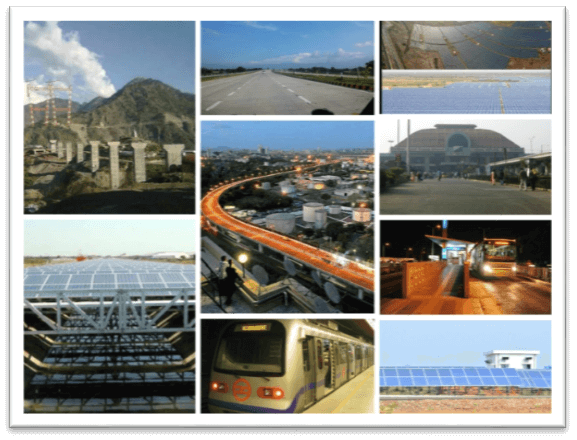
In addition, India has invested in improving its telecommunications infrastructure, with the government implementing the Digital India program, which aims to promote digital connectivity across the country. This program has included initiatives such as the BharatNet project, which aims to provide high-speed broadband connectivity to the countries over 250,000-gram panchayats (village councils). In other countries, infrastructure development has also been a key area of focus. For example, infrastructure development has been a critical driver of economic growth and development in China, with the country investing heavily in transportation, energy, and telecommunications. Similarly, in countries such as Singapore and South Korea, infrastructure development has been critical in promoting economic growth and improving citizens' quality of life. In conclusion, infrastructure development is critical to promoting economic and social development, providing the physical structures and systems that support economic activity and improve citizens' quality of life. While there have been significant successes in infrastructure development in India and other countries, significant work must be done to address remaining infrastructure challenges and build more inclusive and sustainable societies. f. Technological DevelopmentTechnological development has been a key driver of economic growth and social progress in countries worldwide. Significant progress has been made in promoting technological development in India, becoming a leading hub for technology innovation and entrepreneurship. One of India's most significant areas of technological development has been the growth of the information technology (IT) industry. The Indian IT sector has seen rapid growth in recent years, driven by factors such as a highly skilled workforce, supportive government policies, and a growing demand for digital services. The industry has also been a key driver of job creation, with millions of Indians employed in IT-related fields. India has also made significant progress in promoting the use of technology in areas such as healthcare, education, and agriculture. For example, the government has implemented various programs to promote digital tools in healthcare, such as the National Health Stack, which aims to create a shared digital infrastructure for the healthcare sector. The government has also focused on using technology to improve education, with initiatives such as the Digital India program promoting digital tools in education. 
In other countries, technological development has also been a key area of focus. For example, technological development has been a critical driver of economic growth and social progress in the United States. The country is a global software development, biotechnology, and aerospace leader. Similarly, technological development has been invested in countries such as China and South Korea, focusing on artificial intelligence, robotics, and 5G networks. In conclusion, technological development has been a critical driver of economic and social progress in India and other countries. While there have been significant successes in promoting technological development, there is still significant work to be done to address the remaining challenges and ensure that the benefits of technology are shared equitably and sustainably. g. Regional DevelopmentRegional development refers to promoting economic and social development in specific regions of a country to reduce regional disparities and promote inclusive growth. In India, regional development has been a critical area of focus, given the significant economic and social disparities between different parts of the country. One of India's most effective programs to promote regional development is the Pradhan Mantri Gram Sadak Yojana (PMGSY), which aims to improve road connectivity in rural areas. The program has successfully improved access to markets and services in rural areas and has helped promote economic growth and reduce poverty in these areas. In addition, the government has implemented various programs to promote industrial development in specific regions of the country. For example, the Make in India program aims to promote manufacturing activity in the country, focusing on promoting industrial development in specific regions. The government has also implemented various policies to promote the development of special economic zones (SEZs) in specific regions, to promote export-oriented growth, and create employment opportunities. 
In other countries, regional development has also been a key area of focus. For example, in China, regional development has been a critical driver of economic growth and development, with the government implementing various programs to promote economic activity in specific regions. Similarly, Brazil and Mexico have been focused on promoting regional development and reducing economic and social disparities between different parts of the country. In conclusion, regional development is critical in promoting economic and social development, reducing disparities between different parts of a country, and promoting inclusive growth. While significant successes have been made in promoting regional development in India and other countries, significant work must still be done to address the remaining challenges and build more inclusive and sustainable societies. h. Community DevelopmentCommunity development refers to promoting the social, economic, and cultural development of specific communities to improve the quality of life for residents. In India, community development has been a critical area of focus, given the significant social and economic challenges many communities face nationwide. One of India's most effective programs to promote community development is the Mahatma Gandhi National Rural Employment Guarantee Act (MGNREGA), which provides employment opportunities for rural households and promotes rural infrastructure development. The program has successfully promoted the economic development of rural areas, reduced poverty, and helped empower local communities by giving them a voice in decision-making. 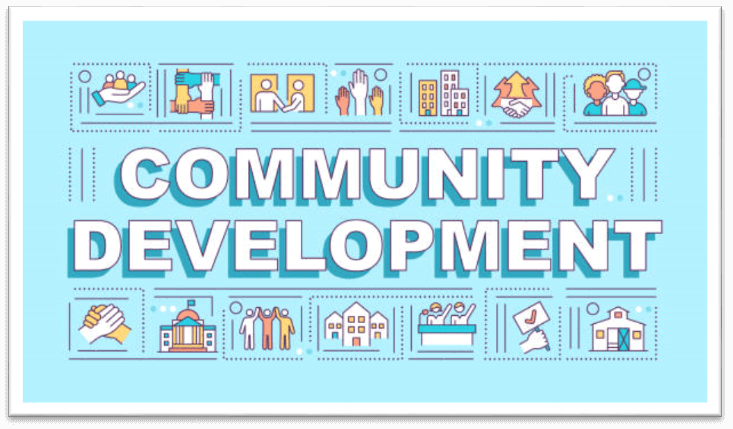
In addition, the government has implemented various programs to promote the development of specific communities, focusing on addressing the social and economic challenges marginalized communities face. For example, the National Rural Livelihood Mission (NRLM) aims to empower rural women and marginalized communities economically and socially. In contrast, the Swachh Bharat Abhiyan aims to promote the development of sanitation infrastructure in rural areas. In other countries, community development has also been a key area of focus. For example, in countries such as Brazil and Mexico, there has been a focus on promoting community-based programs to promote social and economic development. Similarly, in the United States, community development programs have been implemented to address social and economic challenges faced by low-income communities. In conclusion, community development is critical to promoting social and economic development, empowering local communities, and addressing marginalized groups' social and economic challenges. While significant successes have been made in promoting community development in India and other countries, significant work must still be done to address the remaining challenges and build more inclusive and sustainable societies. i. International DevelopmentInternational development promotes economic and social development in developing countries, reducing poverty and promoting sustainable development. India has been actively involved in international development efforts, both as a recipient of development assistance and as a provider of development assistance to other countries. As a recipient of development assistance, India has received significant support from international development organizations such as the World Bank and the United Nations Development Programme (UNDP), focusing on promoting economic growth and reducing poverty. India has made significant progress in achieving the Millennium Development Goals (MDGs) set by the United Nations, with a significant reduction in poverty and improvements in health and education indicators. 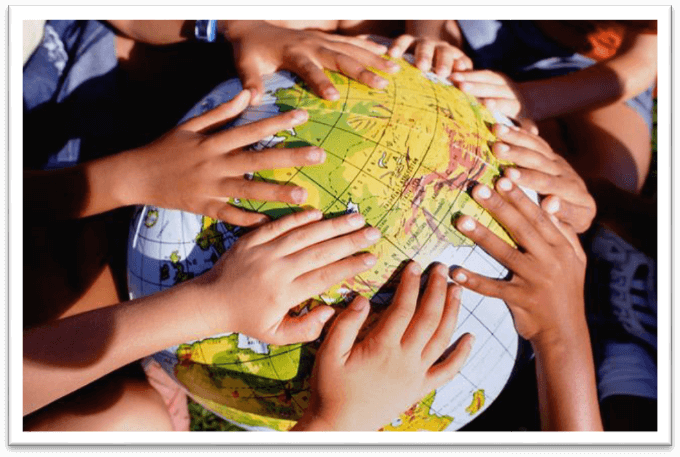
In addition to receiving development assistance, India has become an increasingly important player in providing development assistance to other countries. The Indian government has implemented various programs to promote development in other countries, focusing on sharing its experience and expertise in agriculture, healthcare, and technology. In recent years, India has been increasingly involved in providing development assistance to other developing countries, focusing on promoting South-South cooperation and sharing its experience and expertise in promoting sustainable development. For example, India has provided development assistance to countries such as Bhutan, Nepal, and Bangladesh, focusing on promoting infrastructure development, healthcare, and education. In other countries, international development has also been a key area of focus. Developed countries such as the United States and the United Kingdom provide significant development assistance to developing countries, focusing on promoting sustainable development and reducing poverty. Similarly, international organizations such as the World Bank and the UNDP play a critical role in promoting development in developing countries. In conclusion, international development is critical in promoting economic and social development in developing countries, focusing on reducing poverty and promoting sustainable development. India has been actively involved in receiving and providing development assistance to other countries, focusing on sharing its experience and expertise in promoting sustainable development. While significant successes have been made in promoting international development in India and other countries, significant work must still be done to address the remaining challenges and build more inclusive and sustainable societies. j. Urban DevelopmentUrban development refers to promoting social and economic development in urban areas, focusing on improving the quality of life for urban residents. In India, urban development has been a critical area of focus, given the rapid urbanization and significant social and economic challenges faced by many urban areas across the country. The government of India has implemented various programs to promote urban development, focusing on promoting economic growth, reducing poverty, and promoting urban infrastructure development. One of the most effective programs to promote urban development is the Smart Cities Mission, which aims to promote the development of smart and sustainable cities across the country. The program has successfully promoted the economic development of urban areas and improved the quality of life for urban residents. 
In addition, the government has implemented various programs to promote the development of specific urban areas, focusing on addressing the social and economic challenges urban communities face. For example, the Atal Mission for Rejuvenation and Urban Transformation (AMRUT) aims to promote the development of basic urban infrastructure. In contrast, the Pradhan Mantri Awas Yojana (PMAY) aims to provide affordable housing for urban residents. In other countries, urban development has also been a key area of focus. For example, in countries such as China and Brazil, there has been a focus on promoting the development of urban areas, with a focus on improving urban infrastructure and addressing social and economic challenges urban communities face. Similarly, in the United States, urban development programs have been implemented to promote the economic development of urban areas and address social and economic challenges urban communities face. In conclusion, urban development is critical in promoting social and economic development, focusing on improving the quality of life for urban residents and addressing the social and economic challenges urban communities face. While significant successes have been made in promoting urban development in India and other countries, significant work must still be done to address the remaining challenges and build more inclusive and sustainable urban societies. k. Rural DevelopmentRural development refers to promoting social and economic development in rural areas, focusing on improving the quality of life for rural residents. In India, rural development has been a critical area of focus, given the significant social and economic challenges many rural communities face. The government of India has implemented various programs to promote rural development, focusing on promoting economic growth, reducing poverty, and promoting rural infrastructure development. One of the most effective programs to promote rural development is the Mahatma Gandhi National Rural Employment Guarantee Act (MGNREGA), which provides employment opportunities for rural households and promotes rural infrastructure development. The program has successfully promoted the economic development of rural areas, reduced poverty, and helped empower local communities by giving them a voice in decision-making. 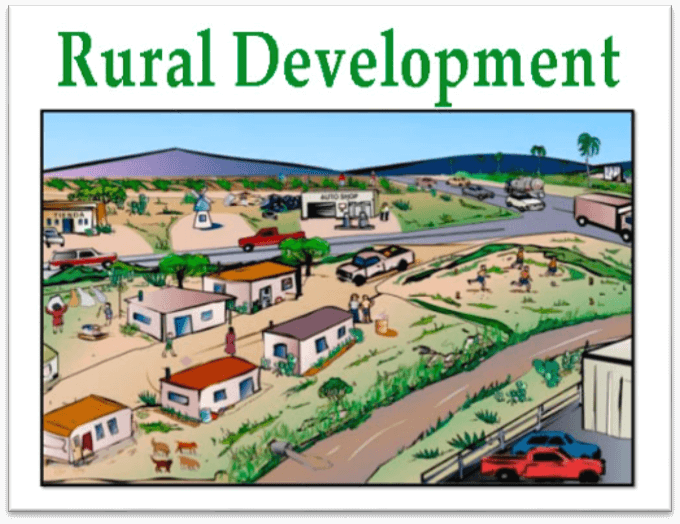
In addition, the government has implemented various programs to promote the development of specific rural communities, focusing on addressing the social and economic challenges marginalized communities face. For example, the National Rural Livelihood Mission (NRLM) aims to empower rural women and marginalized communities economically and socially. In contrast, the Pradhan Mantri Gram Sadak Yojana (PMGSY) aims to promote the development of rural road infrastructure. Rural development has also been a key area of focus in other countries. For example, in countries such as China and Brazil, there has been a focus on promoting the development of rural areas, with a focus on improving agricultural productivity and promoting the development of rural infrastructure. Similarly, in the United States, rural development programs have been implemented to address social and economic challenges faced by rural communities. In conclusion, rural development is a critical element of promoting social and economic development, focusing on empowering local communities and addressing social and economic challenges faced by rural communities. While significant successes have been made in promoting rural development in India and other countries, significant work must still be done to address the remaining challenges and build more inclusive and sustainable rural societies. l. Education and DevelopmentEducation and development are closely intertwined, as education is often seen as a critical element in promoting social and economic development. In India, education has been a key area of focus for promoting development, improving access to education, and promoting the quality of education. The government of India has implemented various programs to promote education and development, focusing on promoting access to education and improving the quality of education. One of the most effective programs promoting education and development is the Sarva Shiksha Abhiyan (SSA), which aims to promote universal access to education for children aged 6 to 14. The program has successfully promoted access to education for children across the country and has helped promote human capital development in India. 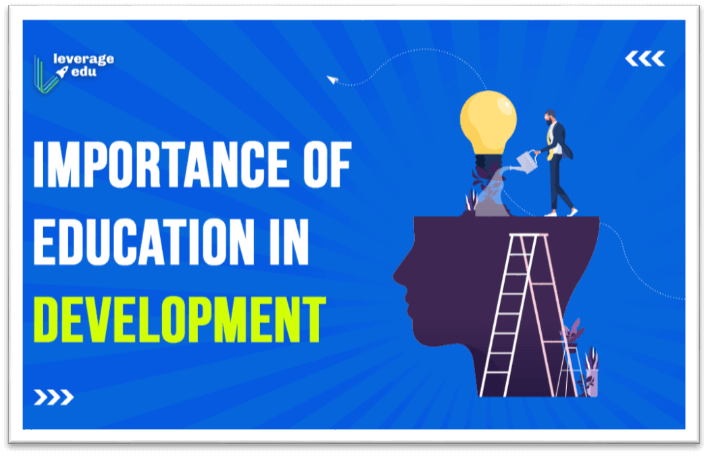
In addition, the government has implemented various programs to promote the quality of education, focusing on improving teacher training and promoting the use of technology in education. For example, the Rashtriya Madhyamik Shiksha Abhiyan (RMSA) aims to promote the development of secondary education in India. In contrast, the Digital India program aims to promote the use of technology in education. In other countries, education and development have also been closely linked. For example, in countries such as China and South Korea, there has been a focus on promoting education as a key element of economic development, improving access to education, and promoting the quality of education. Similarly, in the United States, education has been seen as a critical element in promoting social and economic development, focusing on promoting access to education and improving the quality of education. In conclusion, education and development are closely intertwined and often seen as critical in promoting social and economic development. While significant successes have been made in promoting education and development in India and other countries, significant work must still be done to address the remaining challenges and build more inclusive and sustainable societies. m. Health and DevelopmentHealth and development are inextricably linked. A healthy population is essential for a country's economic and social development. In India and other countries, efforts to improve health outcomes have become increasingly important in recent years. Health outcomes have significantly improved in India over the past few decades, but challenges remain. For example, infant and maternal mortality rates have declined but are still higher than in many other countries. Malnutrition remains a major problem, especially among children under five. In addition, there are significant disparities in health outcomes between different regions and socioeconomic groups. 
To address these challenges, the Indian government has implemented various initiatives. For example, the National Rural Health Mission (NRHM) was launched in 2005 to improve access to quality health care in rural areas. The Ayushman Bharat scheme, launched in 2018, aims to provide health coverage to around 100 million families. The government has also invested in improving sanitation, hygiene, and programs to reduce malnutrition. In other countries, improving health outcomes has also been a priority. For example, in sub-Saharan Africa, progress has been made in reducing child mortality and in the fight against HIV/AIDS. In Latin America, many countries have achieved universal health coverage, providing access to health care for all citizens. In East Asia, investments in health have contributed to economic growth and poverty reduction. Despite progress in many countries, significant challenges remain to be addressed. For example, in many low-income countries, access to health care remains limited, and preventable diseases cause significant morbidity and mortality. In addition, the burden of non-communicable diseases, such as diabetes and cardiovascular disease, is increasing in many countries. To address these challenges, governments, international organizations, and civil society must work together to ensure access to quality health care for all. This requires investments in health systems and programs to address the social determinants of health, such as poverty, education, and sanitation. By prioritizing health, countries can create a virtuous cycle of improved health outcomes and increased economic and social development. n. Gender and DevelopmentGender and development are closely interconnected, and promoting gender equality is essential to achieving sustainable development. In India and other countries, efforts to promote gender equality have been a priority recently. In India, gender inequality remains a significant challenge, with women often facing discrimination and violence. For example, women have lower levels of education, poorer access to healthcare, and limited economic opportunities. Violence against women, including sexual harassment and domestic violence, is also a major problem. 
To address these challenges, the Indian government has implemented various initiatives. For example, the Beti Bachao Beti Padhao (Save the Girl Child, Educate the Girl Child) program aims to improve the status of women and girls by promoting gender equality and empowering women. The government has also implemented various measures to improve women's access to education and healthcare and to prevent violence against women. In other countries, efforts to promote gender equality have also been a priority. For example, many countries have implemented laws to protect women's rights and combat discrimination. In Rwanda, women hold a higher percentage of parliamentary seats than in any other country, while in Sweden, gender equality is integrated into all areas of policy-making. In Latin America, women's movements have played a key role in advancing gender equality and women's rights. Despite progress in many countries, gender inequality remains a significant challenge. For example, in many low-income countries, women face limited access to education, healthcare, and economic opportunities. Violence against women, including sexual and domestic violence, is also a significant problem in many countries. To address these challenges, governments, international organizations, and civil society must work together to promote gender equality and women's rights. This requires investments in education, healthcare, and economic opportunities for women and measures to prevent and respond to violence against women. By promoting gender equality, countries can create a more just and equitable society that benefits everyone. o. Entrepreneurship and DevelopmentEntrepreneurship is a key driver of economic development, as it creates jobs, drives innovation, and contributes to the growth of businesses and industries. In India and other countries, efforts to promote entrepreneurship have become increasingly important in recent years. In India, entrepreneurship has gained significant momentum in recent years, with the government implementing various initiatives to promote start-ups and small businesses. For example, the Start-up India program, launched in 2016, provides a platform for start-ups to access funding, mentorship, and other resources. In addition, the government has implemented various measures to simplify starting a business and improve the ease of doing business in the country. 
In other countries, entrepreneurship has also been a priority for economic development. For example, the Small Business Administration supports small businesses and start-ups in the United States. At the same time, in China, the government has implemented various measures to promote entrepreneurship, including providing funding and other resources. Despite progress in many countries, significant challenges remain to be addressed. For example, in many low-income countries, access to funding and other resources for entrepreneurship is limited, and regulatory barriers can make it difficult to start and grow a business. In addition, there may be cultural and societal barriers to entrepreneurship, particularly for women and other marginalized groups. To address these challenges, governments and other stakeholders must work together to create an enabling environment for entrepreneurship. This requires investments in education and training, as well as in infrastructure and other resources to support the growth of businesses. In addition, measures to promote gender equality and social inclusion can help ensure that everyone can participate in entrepreneurship and benefit from its potential for economic development. By promoting entrepreneurship, countries can create a more vibrant and dynamic economy that benefits everyone. p. Aid and DevelopmentAid and development are closely intertwined, as aid can promote sustainable development and reduce poverty. In India and other countries, aid has been a key factor in promoting economic growth and social development. In India, aid has played an important role in supporting development efforts. For example, the World Bank and other international organizations have provided funding and technical assistance to support various initiatives, such as infrastructure development, healthcare, and education. In addition, the Indian government has implemented various measures to attract foreign aid and investment, such as improving the ease of doing business and implementing reforms to address corruption and bureaucratic inefficiencies. 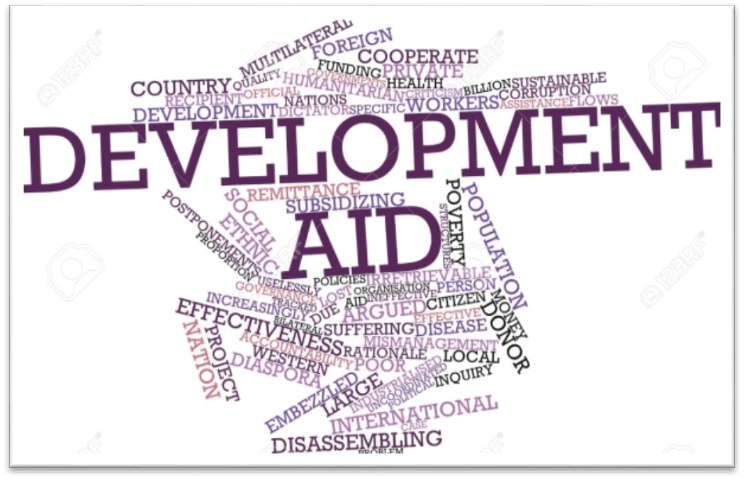
In other countries, aid has also been a key factor in promoting development. For example, in sub-Saharan Africa, aid has been critical in supporting healthcare, education, and agriculture initiatives. In addition, aid has been used to support post-conflict reconstruction and disaster relief efforts in countries such as Haiti and Nepal. Despite the benefits of aid, there are also challenges to be addressed. For example, aid can sometimes be misused or inefficiently allocated, and there may be concerns about the sustainability of development efforts. In addition, there may be concerns about the impact of aid on recipient countries' economies and governance structures. Aid must be targeted, effective, and implemented transparently and accountable to address these challenges. In addition, efforts to promote sustainable development must be integrated into all aid and development initiatives and must be tailored to the specific needs of each country and community. By promoting effective aid and development, countries can create a more just and equitable world that benefits everyone. q. Environmental DevelopmentEnvironmental development is critical to sustainable development, as it promotes economic growth and social development while preserving the natural environment. In India and other countries, efforts to promote environmental development have become increasingly important in recent years. In India, environmental development has become a priority in response to the country's significant environmental challenges, including air and water pollution, deforestation, and climate change. The Indian government has implemented various initiatives to promote environmental development, such as the Swachh Bharat (Clean India) Mission, which aims to improve sanitation and waste management, and the National Clean Energy Fund, which supports renewable energy projects. 
In other countries, environmental development has also been a priority. For example, in Norway, the government has implemented various measures to reduce greenhouse gas emissions and promote sustainable forestry practices. The government has implemented initiatives in Costa Rica to protect the country's rich biodiversity, such as establishing national parks and reserves. Despite progress in many countries, significant challenges remain to be addressed. For example, in many low-income countries, access to clean water, sanitation, and other basic services is limited, and deforestation and other environmental challenges continue to threaten the natural environment. In addition, climate change remains a significant challenge that requires global action to address. Governments and other stakeholders must address these challenges to promote environmental development. This requires investments in clean energy, sustainable forestry, and other environmentally-friendly initiatives. In addition, measures to promote sustainable agriculture, conservation of biodiversity, and waste management can help reduce human activity's impact on the natural environment. By promoting environmental development, countries can create a more sustainable and equitable world that benefits both people and the planet. r. Political DevelopmentPolitical development is critical to a country's overall development, as it provides the foundation for good governance, democratic participation, and the rule of law. In India and other countries, efforts to promote political development have become increasingly important in recent years. Political development has been a priority in India since the country's independence in 1947. The country has implemented various initiatives to promote democratic participation, such as establishing an independent electoral commission and implementing affirmative action policies to promote political representation for marginalized communities. In addition, the Indian government has implemented measures to address corruption and improve transparency, such as the Right to Information Act, which provides citizens with access to government information. 
In other countries, political development has also been a priority. For example, in South Africa, the country's transition from apartheid to democracy in the 1990s marked a significant achievement in political development. In addition, many countries have implemented measures to promote good governance, such as establishing independent judicial systems and anti-corruption agencies. Despite progress in many countries, significant challenges remain to be addressed. For example, in many countries, access to political participation and representation is limited for marginalized communities, and corruption and abuse of power continue to threaten good governance. In addition, political instability and conflict can undermine progress toward political development in some countries. Governments and other stakeholders must address these challenges to promote political development. This requires investments in democratic institutions, such as electoral commissions and independent media, as well as measures to promote transparency and accountability in government. In addition, efforts to promote peace and stability can create an environment conducive to political development. By promoting political development, countries can create a more just and equitable world that benefits everyone. s. Conflict and DevelopmentConflict and development are closely linked, as conflict can significantly impact a country's social, economic, and political development. In India and other countries, efforts to promote development must take into account the impact of conflict and work to address its root causes. The conflict has been a significant challenge in India in various parts of the country, such as in Jammu, Kashmir, and the Northeast. These conflicts have significantly impacted the affected regions, leading to economic underdevelopment, displacement, and human rights abuses. The Indian government has implemented various initiatives to address these conflicts, such as efforts to promote dialogue and peace negotiations. 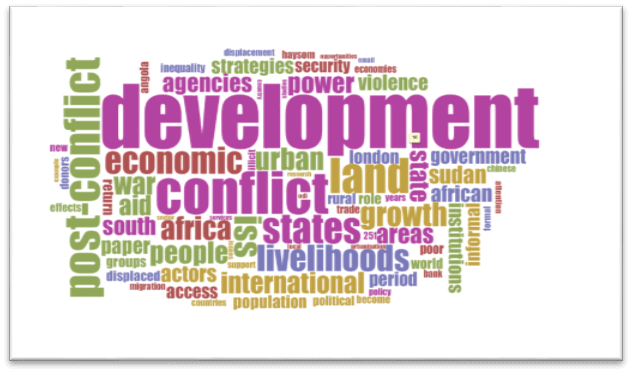
In other countries, the conflict has also significantly impacted development. For example, the ongoing civil war in Syria has led to widespread displacement and significant economic damage. In addition, conflict in countries such as Yemen, Afghanistan, and the Democratic Republic of Congo has led to significant humanitarian crises. To address the impact of conflict on development, it is essential to address the root causes of conflict. This requires efforts to promote dialogue, address economic inequalities, and promote inclusive governance structures. In addition, efforts to promote peacebuilding and conflict resolution can help to prevent conflict and promote long-term stability. Despite the challenges of conflict, there are opportunities to promote development in post-conflict environments. This requires efforts to promote economic recovery, humanitarian assistance, and social and political reconciliation. Countries can create a more stable and peaceful world that benefits everyone by promoting conflict resolution and post-conflict development. t. Historical Development Trends.Historical development trends refer to the patterns of economic, social, and political change that have taken place in different countries over time. These trends are influenced by various factors such as culture, geography, technology, and political systems. India and other countries have undergone significant historical development trends that have shaped their present-day realities. In India, one of the significant historical development trends was the rise and fall of various empires, such as the Mauryan, Gupta, and Mughal empires. These empires had significant political and economic influence, leaving behind a rich cultural and historical legacy. The British colonization of India in the 19th century also profoundly impacted the country's economic and political development, leading to the rise of the Indian independence movement and eventual independence in 1947. Other countries have experienced different historical development trends. For example, in China, the rise and fall of dynasties and the communist revolution of 1949 were critical historical development trends. These events shaped China's political and economic systems, leading to the country's current status as a major global economic power. In the United States, historical development trends include westward expansion, the Civil War, and the civil rights movement. These events have shaped the country's political and social landscape, leading to the establishment of a democratic government and the struggle for equal rights for all citizens. Overall, historical development trends have played a crucial role in shaping the modern-day realities of different countries. Understanding these trends can provide insights into a country's current economic, social, and political systems, as well as its future potential for development. The ConclusionIn conclusion, development in India and other countries has been shaped by a variety of historical factors, including political systems, cultural traditions, geography, and technological advancements. India's development has been influenced by the caste system, the rise and fall of various empires, and British colonization, leading to the country's current status as a major global economic power. Other countries, such as China and the United States, have experienced different historical development trends that have influenced their economic, social, and political systems. Despite their differences, all countries face common challenges in their development journey, including poverty, inequality, and environmental sustainability. The United Nations Sustainable Development Goals (SDGs) provide a framework for countries to work towards a more equitable and sustainable future. Through international cooperation and innovative solutions, countries can overcome these challenges and achieve their development goals, leading to a better quality of life for all citizens.
Next TopicFinance definition
|
 For Videos Join Our Youtube Channel: Join Now
For Videos Join Our Youtube Channel: Join Now
Feedback
- Send your Feedback to [email protected]
Help Others, Please Share










